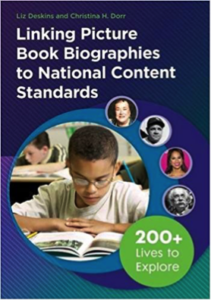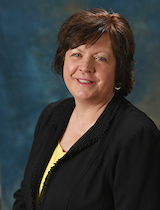Picture Book Biographies for the Middle Grades
What’s one of the best ways to introduce students to a new science concept, a historical era, or a math formula? How about a new artistic style, musical instrument, or famous writer? A picture book biography, of course!
Today’s titles are a mixture of engaging, informative stories combined with full color, action-packed illustrations. Use them as read aloud’s, for small group instruction, or individual student motivation. And they work well in the middle grades.
Many picture books written over the last decade or so have been created with the older student in mind. More sophisticated and complex topics, higher vocabulary, and more intricate illustrations are hallmarks of these books.
And students are never too old to be read to! Group readings of these books spark conversation, relay information, and make abstract concepts more tangible.
And They’re Standards Friendly
It’s easy to pair picture book biographies with national and state content standards in the social studies, science, and the arts. Why not choose a new biography of Benjamin Franklin, arguably the most interesting character among the Founding Fathers, to introduce the study of the Constitution?
Or a picture book biography of Peter Mark Roget to demonstrate the value of choosing the precise word when writing? Studies of the ocean ecosystem, and how climate change affects it, can be enhanced by the story of National Geographic explorer-in-residence Sylvia Earle.
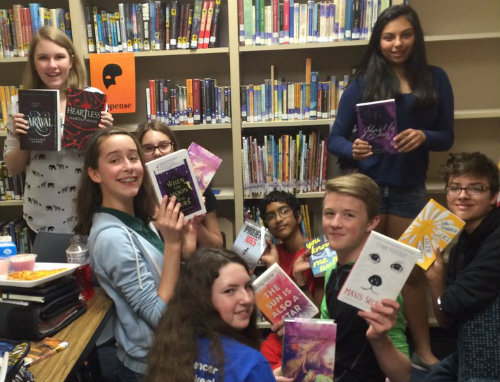
New books for students in Christina Dorr’s media center
Mathematics tends to be either very exciting to students, or a dreaded subject. What about sharing a picture book biography of Frank Lloyd Wright, and show how math plays into the design and building of structure.
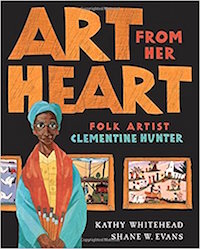
A Closer Look at 4 Recent Picture Bios
Consider the following four picture book biographies. How might they be used as a read aloud, or in a small group setting, to teach standards in your classroom?
Miss Mary Reporting: The True Story of Sportswriter Mary Garber. By Sue Macy. Illus. C.F. Payne. New York: Simon & Schuster, 2016.
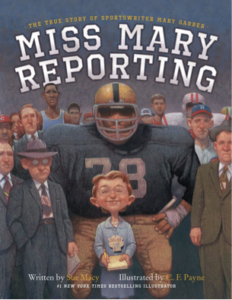
First a society page reporter, she was given the sports column at the Winston-Salem Journal when the regular reporter joined the Navy during WWII. She took on the job with gusto, made her way into press boxes for professional team games, covered African American high school football, and for fifty years tried to portray sports of all types and at all levels, as positively as possible.
The engaging writing is accompanied by energetic mixed media, mostly double page spread paintings, with a hazy, subdued palette that allows Mary to standout. The end matter consists of an author’s note, timeline, resource list, and source notes. What about using this title to teach practical ways of putting nonfiction writing skills to use, as well as the power of persuasion?
Maya Lin Artist-Architect of Light and Lines: Designer of the Vietnam Veterans Memorial. By Jeanne Walker Harvey. Illus. Dow Phumiruk. New York: Henry Holt and Company, 2017.
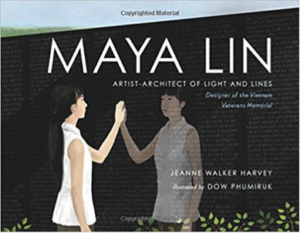
When, in her final year of college, the contest was announced for the Vietnam Veterans Memorial, Maya brought together all she learned about design and the importance of names, as the names of all the fallen would be included.
Her design won out of 1,421 applicants, but not without controversy. She oversaw the entire construction, crying when she found the name of her friend’s father. A final author’s note gives additional information, and the quiet digital and watercolor illustrations vary widely in layout, perspective, sometimes with added borders, all adding to the power of the book. The inspiration Maya’s story offers could assist you in teaching design in an art class or 20th century American history.
A Boy, a Mouse, and a Spider: The Story of E.B. White. By Barbara Herkert. Illus. Lauren Castillo. New York: Henry Holt Co., 2017.
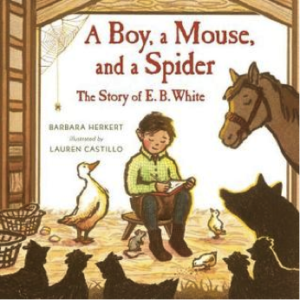
The digital, ink, and watercolor illustrations look as if they were childlike period pieces. And the poetic short prose writing adds to the feel of his life. This picture book biography concludes with a photo of White, an author’s note of additional information, and a short bibliography. White’s story demonstrates the power of life experiences as an inspiration for writing fiction.
Listen: How Pete Seeger Got America Singing. By Leda Schubert. Illus. Raul Colon. New York: Roaring Brook Press, 2017.
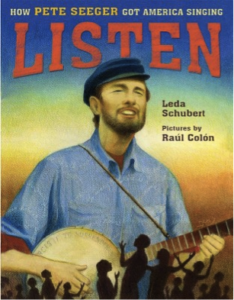
Woven into this rhythmic, free verse story of Seeger’s life are many of his song titles, off-set in blue font. The illustrations are hazy, textured, emotion filled pieces that complement the text. A concluding author’s note relates more of his legacy and is followed by a timeline, endnotes, and sources. Seeger’s life would play as an excellent example of music history, but it also teaches about the civil rights movement of the 1960’s and ‘70’s.
Books to reach beyond the classroom
This is just a smattering of the picture book biographies available to middle school students. These books have the capacity to engage, instruct, and inspire students to look beyond their own small world and time frame, to see possibilities and encourage empathy toward others. I challenge you set out to discover many more titles that will allow you to connect students with content.
